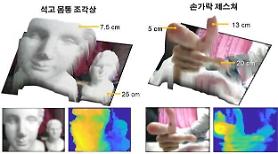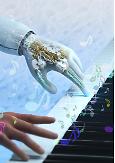
[Courtesy of KAIST]
The downscaling of acoustic sensors relies on the frequency band control of the ultrathin piezoelectric membrane while maintaining high sensitivity in miniaturized dimensions. "We report a highly sensitive and flexible piezoelectric mobile acoustic sensor (PMAS) via biomimetic frequency band control," a research team from the state-run Korea Advanced Institute of Science & Technology (KAIST) said in a research paper published on the website of Science Advances, a peer-reviewed open-access scientific journal.
In 2018, KAIST researchers introduced the concept of a flexible piezoelectric acoustic sensor for AI voice recognition and developed a prototype through a start-up. They are now trying to establish a commercialization process for mass production.
The research team said that a multi-resonant voice spectrum was achieved by adopting e lead-zirconate-titanate (PZT) thin film on an ultrathin polymer membrane for a mobile-sized acoustic sensor. "We developed a highly sensitive and miniaturized PMAS for multi-resonant frequency band control using a biomimetic ultrathin piezoelectric membrane."
Copyright ⓒ Aju Press All rights reserved.



